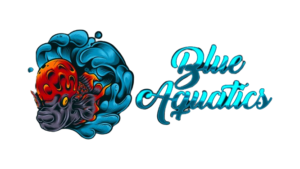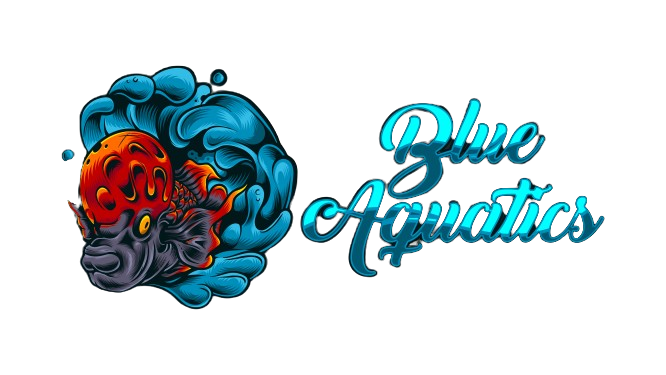How to Achieve Crystal Clear Water: A Step-by-Step Guide to use Activated Carbon
Activated carbon, often referred to as “AC” in the aquarium community, is a powerful tool that can significantly enhance the health and clarity of your aquarium. In this comprehensive guide, we’ll explore the various uses of activated carbon, how it benefits aquariums, and the step-by-step process of using it effectively. Let’s dive into the world of activated carbon and uncover its secrets for maintaining a thriving aquatic environment.
1. Understanding Activated Carbon
1.1 What is Activated Carbon?
Activated carbon is a porous material with an incredibly large surface area that allows it to adsorb (not absorb) a wide range of impurities from air or water. It is created by heating carbon-rich materials, like wood, peat, coconut shells, or sawdust, to high temperatures in the presence of a gas that doesn’t react with the material.
1.2 How is Activated Carbon Made?
The activation process involves exposing the carbon-rich material to an oxidizing gas, such as steam or air, at high temperatures. This process creates pores in the carbon, increasing its surface area and making it highly effective in adsorbing impurities.
1.3 Types of Activated Carbon
There are various types of activated carbon available for aquarium use, including granular activated carbon (GAC), pelletized activated carbon, and powdered activated carbon (PAC). Each type has its specific applications and advantages, depending on the aquarium’s needs.
2. Benefits of Activated Carbon in Aquariums
2.1 Removal of Impurities
Activated carbon excels at removing impurities from aquarium water, including organic compounds, toxins, and heavy metals. It acts like a magnet, attracting and trapping these substances within its porous structure.
2.2 Clearing Discoloration
One of the noticeable benefits of using activated carbon is its ability to clear water discoloration. It effectively removes tannins, phenols, and other compounds that cause water to appear yellow or brown.
2.3 Odor Control
Activated carbon is a potent odor absorber. It eliminates unpleasant smells caused by decaying organic matter, fish waste, or certain medications. This results in a fresher and more enjoyable aquarium environment.
2.4 Chemical Filtration
Beyond physical impurities, activated carbon aids in chemical filtration by adsorbing harmful substances such as chlorine, chloramines, and certain medications. This is particularly useful during water changes or when introducing new fish to the tank.
2.5 Improving Water Clarity
By removing impurities and particles that contribute to cloudiness, activated carbon plays a vital role in enhancing water clarity. This not only benefits the aesthetics of the aquarium but also creates a healthier environment for fish and other aquatic inhabitants.
3. Choosing the Right Activated Carbon for Your Aquarium
3.1 Particle Size
The particle size of activated carbon can influence its effectiveness. Finer particles have a larger surface area but may clog more quickly. Coarser particles have less surface area but can maintain water flow for a more extended period. The choice depends on the specific needs of your aquarium.
3.2 Quality and Purity
Opt for high-quality activated carbon to ensure its effectiveness. Check for certifications or indicators of purity, as contaminants in lower-grade carbon may leach into the water.
3.3 Granulated vs. Pelletized
Granulated activated carbon (GAC) and pelletized activated carbon both have their merits. GAC is versatile and offers better water flow, while pelletized carbon is more compact and less likely to release particles into the tank. Consider the requirements of your filtration system when choosing between the two.
4. How to Use Activated Carbon in Your Aquarium
4.1 Preparing Activated Carbon
Before introducing activated carbon to your aquarium, rinse it thoroughly to remove fine particles that could cloud the water. Rinse until the water runs clear.
4.2 Placement in the Filtration System
Activated carbon is typically placed in a mesh bag or a designated chamber within the filter. Position it where water flows through it effectively. Avoid compacting the carbon to ensure optimal water circulation.
4.3 Replacement Schedule
Activated carbon has a lifespan, and its effectiveness diminishes over time. Regularly replace the carbon according to the manufacturer’s recommendations or when you notice a decline in water clarity and quality.
4.4 Avoiding Overuse
While activated carbon is beneficial, excessive use can lead to a decline in essential nutrients and trace elements. Use it judiciously, especially in planted tanks where certain nutrients are vital for plant growth.
5. Common Misconceptions About Activated Carbon
5.1 Myth: Activated Carbon Eliminates Beneficial Bacteria
Activated carbon primarily removes organic compounds, not bacteria. It does not harm beneficial bacteria crucial for the nitrogen cycle. In fact, it can promote a healthier bacterial balance by removing toxins that may negatively impact bacterial colonies.
5.2 Myth: Activated Carbon Should Always Be Used
While activated carbon is advantageous, it’s not a mandatory component of every aquarium. Assess the specific needs of your tank, and use activated carbon as a tool when necessary.
5.3 Myth: Activated Carbon Lasts Forever
Activated carbon has a finite lifespan. Regularly monitor its condition and replace it as needed to ensure continued effectiveness.
6. Tips and Tricks for Optimal Use
6.1 Monitor Water Parameters
Regularly test and monitor water parameters to ensure that the use of activated carbon is achieving the desired results without negatively impacting essential elements in the aquarium.
6.2 Combine with Mechanical Filtration
Pairing activated carbon with mechanical filtration, such as sponge filters or filter floss, can enhance its efficiency by capturing larger particles before they reach the carbon.
6.3 Activated Carbon and Medications
Avoid using activated carbon during medication treatments, as it may remove the medication from the water. Resume using activated carbon after completing the treatment.
6.4 Activated Carbon and Plant Tanks
In planted aquariums, consider the impact of activated carbon on nutrient levels. Adjust dosing or choose specific types of carbon to maintain a balance between water clarity and plant health.
Conclusion
In conclusion, activated carbon is a valuable asset in the world of aquarium maintenance. Its ability to adsorb impurities, improve water clarity, and contribute to a healthier aquatic environment makes it a versatile tool for aquarists. By understanding its uses, choosing the right type, and using it judiciously, you can harness the power of activated carbon to create and maintain a thriving aquarium that both you and your aquatic companions will enjoy. Dive in and experience the wonders of activated carbon in transforming your aquarium into a crystal-clear underwater haven.


